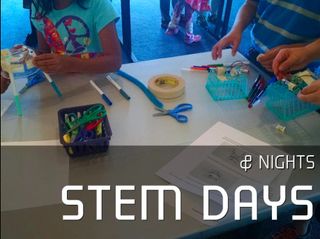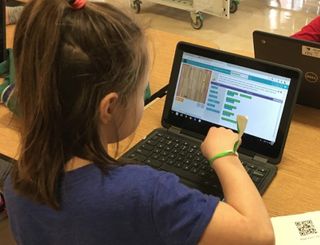Breadboarding, Arduino boards, Tinkercad, Scratch, and Makey Makey are all products that educators are using to embed STEAM (science, technology, engineering, arts, and math) into their curricula. Today’s forward-thinking educator is asking herself how to infuse coding, STEM, and STEAM into the classroom. Many educators, however, find it difficult to know where to start.
How to spearhead effective STEM/STEAM initiatives was a hot topic during the Tech & Learning Leadership Summit in Redwood City, California. Tech leaders from across the country, led by Steve Ouellette and Lynn Swanson-Williams, discussed leading STEM education in their districts.
[A DISTRICT-LEVEL LOOK AT INNOVATION IN K–12]
Swanson-Williams, instructional technology coordinator at Cary (IL) CCSD 26, believes that educational leaders must “plant a flag for STEM education” and leave a breadcrumb trail, in the form of STEM opportunities, for teachers to find and wave the “flag for STEM education.” These “educational breadcrumbs” include after-school clubs focused on coding and working with drones and littleBits, STEM professional development, reimagining educational spaces in school buildings, and purposeful school-wide STEM initiatives.
In Swanson-Williams’s district, technology coaches lead professional development. This STEM training empowers teachers to redesign current lessons by infusing them with higher-level thinking skills and STEM components. The “reimagined space breadcrumb” involved repurposing a computer lab into a makerspace where students and teachers could learn alongside one another to integrate STEM and STEAM into existing classroom lessons. Another breadcrumb leading to the STEAM flag at CCSD 26 is called “STEM Days and Nights.” Teachers and students spend four days working on a subject-area project that’s infused with STEM concepts. To conclude the work, students showcase their project to parents and the community, thus raising the awareness of STEM education. Many of the projects focus on developing empathy in students by asking them to identify a community problem and work toward a solution.Lynn Swanson-Williams


Ouellette, director of technology, learning, and innovation in Westwood (MA) Public Schools, discussed ways that his district is “cracking the code” and leaving breadcrumbs to find the STEM flag. These include immersing elementary students in coding classes once a week and providing high-school students with a larger menu of STEM classes. Ouellette challenged conference participants to ponder the following questions: How can we replicate the learning dispositions STEM/STEAM courses foster in other content areas? How can we integrate STEM/STEAM ideas across all content areas? And how do we overcome the challenges of institutional constraints and competing demands on time, resources, and talent to offer STEM/STEAM experiences for our students?
Technology leaders attending the conference discussed their own “breadcrumbs,” or projects in which teachers and students are involved that integrate STEM into the core curriculum. These “breadcrumbs” include tech teams, digital portfolios, art classes using Sphero computers, 3D printing, reimagining libraries by integrating makerspaces, Skyping with technology business leaders, and clubs that teach Breadboarding and Arduino board development. Whether districts are leaving a few breadcrumbs or many breadcrumbs to help educators find the STEM flag, one thing is certain—educators are hungry to know more about STEM.
To learn more about STEM so you can plant some breadcrumbs in your own district , check out these resources:
- https://www.tinkercad.com
- https://scratch.mit.edu/
- https://scratch.mit.edu/tips
- https://www.code.org/learn
- http://classroom.shellyfryer.com/workshops/scratchjr
- https://makecode.com/
- http://wiki.wesfryer.com/Home/handouts/scratch
- https://makeymakey.com/apps
- https://scratch.mit.edu/projects/2530241
Jerri Kemble is the Assistant Superintendent of Leading, Learning, and Technology for Lawrence (KS) Public Schools

